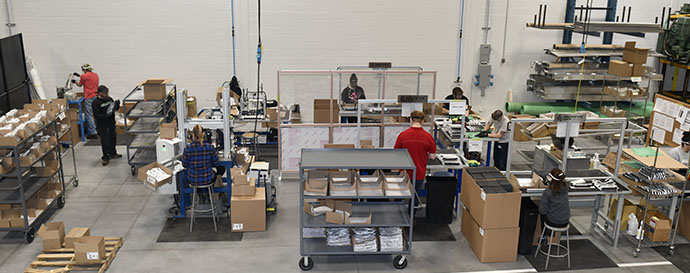At the end of November 30, 2020, the Government of Canada released the 2020 Fall Economic Statement (FES) titled Supporting Canadians and Fighting COVID-19. Focusing primarily on the support from the Regional Relief and Recovery Fund (RRRF), the FES report highlights details about RRRF statistics, projections, and strategy plans as they relate to COVID-19 support for Canadian health, safety, business, and jobs.
Canada’s Fall Economic Statement (FES) highlights that since its launch in May 2020, the Regional Relief and Recovery Fund (RRRF) has supported over 15,000 businesses in Canada, including more than 5,000 women-owned organizations and over 8,500 rural companies, saving around 100,000 jobs during the ongoing global COVID-19 pandemic.
Share on facebook
Share on linkedin
Share on whatsapp
Share on twitter
What is the Regional Relief and Recovery Fund (RRRF)?
The Regional Relief and Recovery Fund (RRRF) provides repayable interest-free loans that support the fixed operating costs of Canadian businesses which cannot meet the eligibility criteria to receive funding through other federal and provincial COVID-19 support programs.
The RRRF was recently extended and expanded in southern Ontario and businesses may now receive loans for retroactive costs from March 15, 2020 until March 31, 2021 for up to a maximum of $1 million, and select not-for-profit organizations are now eligible for funding.
“Our government will always be there to support Canadians to stabilize the economy and help businesses grow. We’re working with you to support good, local jobs and help Western Canada’s economy come back strong.”
– Mélanie Joly, Minister of Economic Development and Official Languages
The expense deadline of March 31, 2021 for RRRF funding support is fast approaching, apply soon to receive interest-free loans to support your economic plans during the pandemic.
STay up to date on the changing face of business
Canada’s 2020 Fall Economic Statement: Plans for Ongoing COVID-19 Support for Canadian Businesses
The Government of Canada’s 2020 FES highlights an ongoing action plan including proposed measures to continue protecting Canadians’ health, businesses, and jobs in order to maintain strong economic growth and stability. The full 2020 report can be accessed here.
A few of these major planning measures include:
- A new Highly Affected Sectors Credit Availability Program that would provide government funding in low-interest loans for hardest hit businesses, including those in sectors like tourism and hospitality, hotels, and arts and entertainment.
- A $206 million investment over two years, starting in 2020-21, to the regional development agencies for a new Regional Air Transportation initiative.
- Extending the 25 percent top-up to the Canada Emergency Rent Subsidy until March 13, 2021.
- Extending the Canada Emergency Response Benefit for an additional four weeks.
- Increasing the maximum Canada Emergency Wage Subsidy rate to 75 percent for the period beginning December 20, 2020 and extending this rate until March 13, 2021.
In regards to RRRF funding to support Canadian businesses, the government is anticipating an additional investment of up to $500 million, bringing total funding to over $2 billion. These changes have not yet been announced. To stay up to date about RRRF or to discuss your opportunity to receive COVID-19 funding support, please contact Mentor Works.
Author: Alena Barreca – As a Marketing Coordinator at Mentor Works, Alena helps Canadian business owners by creating educational content about government funding.
Mentor Works is a business support organization specializing in Canadian government funding. The Ontario-based business has helped hundreds of businesses build and execute their funding strategy through a mix of federal and provincial government grants, loans, and tax credits. Mentor Works offers free online resources, funding webinars, and news via their website at www.mentorworks.ca.



